Overview
The Sandy Ridge Facility (Facility) is a near-surface geological repository located 240 km by road from Kalgoorlie in Western Australia (Figure 1). Tellus successfully completed construction, commissioning, and transition to operations of the Facility in 2020. Since then, the Facility has been safely accepting and handling hazardous waste for surface storage. On 19 March 2021, the WA Government granted an amended operating licence authorising waste treatment on site and in-cell placement of hazardous and intractable waste at the Facility.
Tellus is proposing that Ministerial Statement (MS) 1078 be amended to align our licence capacity at the gate to the in-ground disposal capacity.
Figure 1: Location of Sandy Ridge Facility
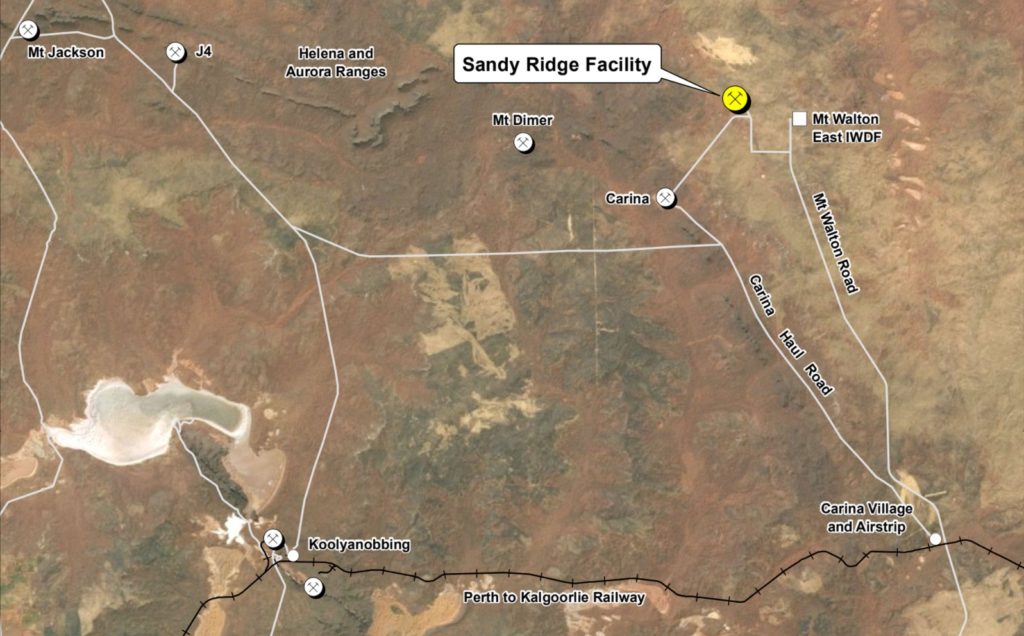
Why are we revising the Sandy Ridge Project?
- Australia is one of the world’s highest generators of hazardous waste per capita (National Waste Report 2020, Department of Agriculture, Water and the Environment).
- Hazardous waste is growing at 3x gross domestic product and 5x population growth rates.
- In 2017-2018, Australia generated a total of 67 million tonnes of waste across four categories. Hazardous waste accounted for 12 % of that (or 8 million tonnes).
- Australia and WA do not have sufficient infrastructure to deal with legacy, current and emerging hazardous waste volumes.
- The revised Sandy Ridge Project will provide Tellus with operational flexibility to accept more solid wastes when less liquid wastes are received.
- This will allow Tellus the flexibility it needs to solve more of the emerging solid waste challenges we are seeing in WA and across the country.
- The natural geology, landscape and environment at Sandy Ridge make it the perfect place to permanently isolate hazardous waste. It is seismically stable, is in a natural impermeable clay formation, has an overlaying impermeable silcrete layer, a semi-arid climate and no sensitive receivers.
- Added to the natural safety barriers of the site, the Facility uses best practice operational safety systems and processes, to create a safety case that is so strong that we can permanently dispose of Class IV and Class V hazardous waste. The revised Sandy Ridge Project will allow Tellus to develop its service offering and continue cleaning up Australia of hazardous waste.
- For more details on the Sandy Ridge Facility please refer to https://tellusholdings.com/projects/sandy-ridge-facility/.
Aerial overview of the Sandy Ridge Facility
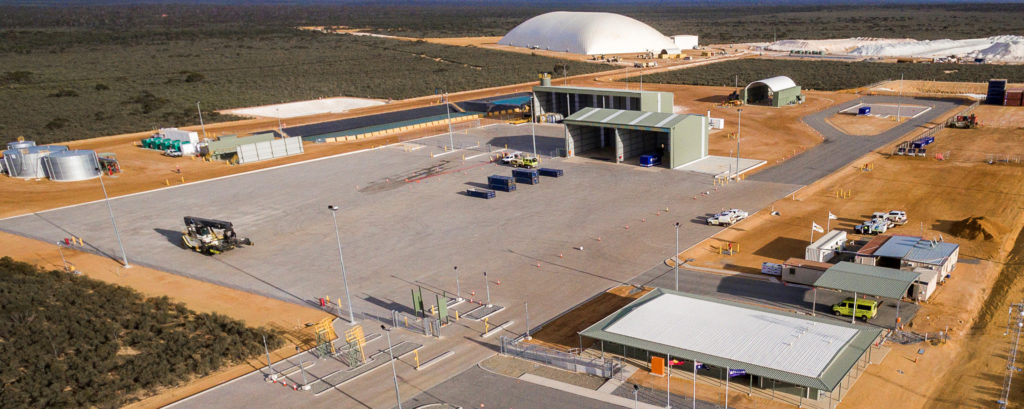
What is the Revised Sandy Ridge Project?
- Tellus seeks to align the mass of material received at the Facility gate to the mass of material disposed in the waste cells (280,000 tpa). No changes are proposed to the development envelope, clearing extent or water abstraction.
- The key characteristics table from MS1078 and the proposed change is detailed below.
Element |
Authorised extent |
Proposed authorised extent |
Change / no change to implementation condition |
Mine pits/waste cells |
Clearing up to 202.3 hectares of native vegetation within a 1,061 hectare (ha) development envelope. |
Clearing up to 202.3 hectares of native vegetation within a 1,061 ha development envelope. |
No change |
Associated infrastructure |
Clearing up to 73.75 hectares of native vegetation within a 1,061 ha development envelope. |
Clearing up to 73.75 hectares of native vegetation within a 1,061 ha development envelope. |
No change |
Class IV & V waste accepted at the gate |
Up to 100,000 tpa |
Up to 280,000 tpa |
Change |
Temporary waste storage on surface |
Up to 15,000 tonnes |
Up to 15,000 tonnes |
No change |
Maximum temporary storage time |
Up to 12 months |
Up to 12 months |
No change |
Waste (including treated waste) disposed to waste cells |
Up to 280,000 tpa |
Up to 280,000 tpa |
No change |
Water abstraction |
Up to 0.18 gigalitres per annum. |
Up to 0.18 gigalitres per annum. |
No change |
Stages of development
The Sandy Ridge Facility has an initial 20-year operating licence.
Tellus is in the early stages of approvals, and stakeholder engagement for the revised Sandy Ridge Project.
-
- Main Approvals
– Referral to WA EPA.
– Level of assessment set by EPA: Public Environmental Review (WE ARE HERE) - Ministerial Approval.
- Amended Operating Licence.
- Ongoing stakeholder engagement (We will be here for the life of the project).
- Main Approvals
Operations Centre, front gate and inspection area prior to vehicles entering site
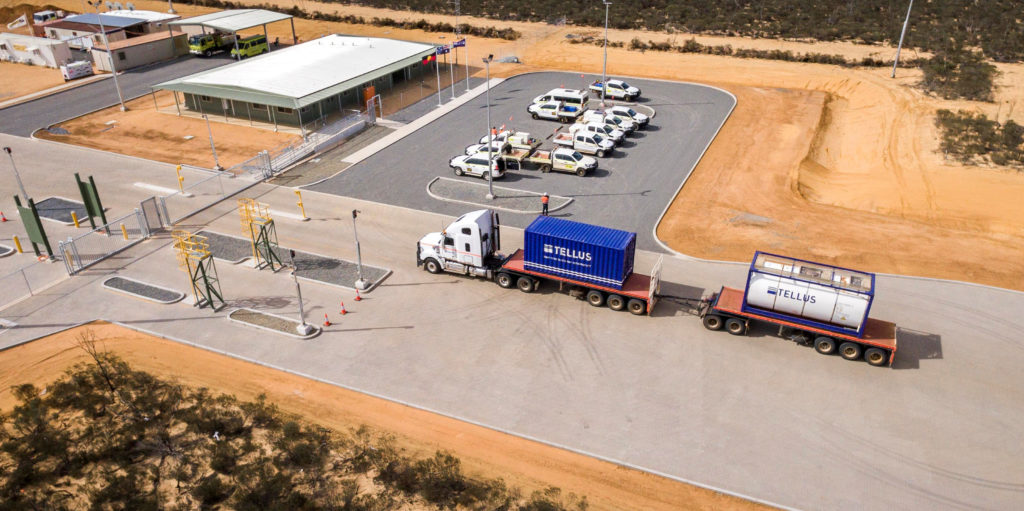
Community engagement
Stakeholders have been engaged using a range of consultation and communication techniques including face-to-face meetings, workshops, interviews, community information sessions, telephone and email communications, as well as media releases and website updates. Numerous meetings have been held with key stakeholders (including indigenous and local communities) and with government agencies in Kalgoorlie, Coolgardie, Boulder, Koolyanobbing, Southern Cross, Perth and Canberra.
Tellus has developed a detailed Stakeholder Engagement Strategy for the revised Sandy Ridge Project. We began formal stakeholder engagement in May 2021 with key stakeholders and this will continue through the life of the project.
Tellus conducted a Public Information Session to update the community and key stakeholders on the progress of environmental approvals and technical studies. The Information Session was a virtual event (interactive webinar), with a formal presentation followed by a question and answer session. The Session was held on 22 June 2022. The slides from the presentation can be accessed here. To provide feedback or lodge questions, please send an email to info@tellusholdings.com.
Tellus will also hold a community consultation session in Kalgoorlie in late 2023 in support of the environmental approvals process.
Container storage yard, road train offloading area and covered waste testing bay
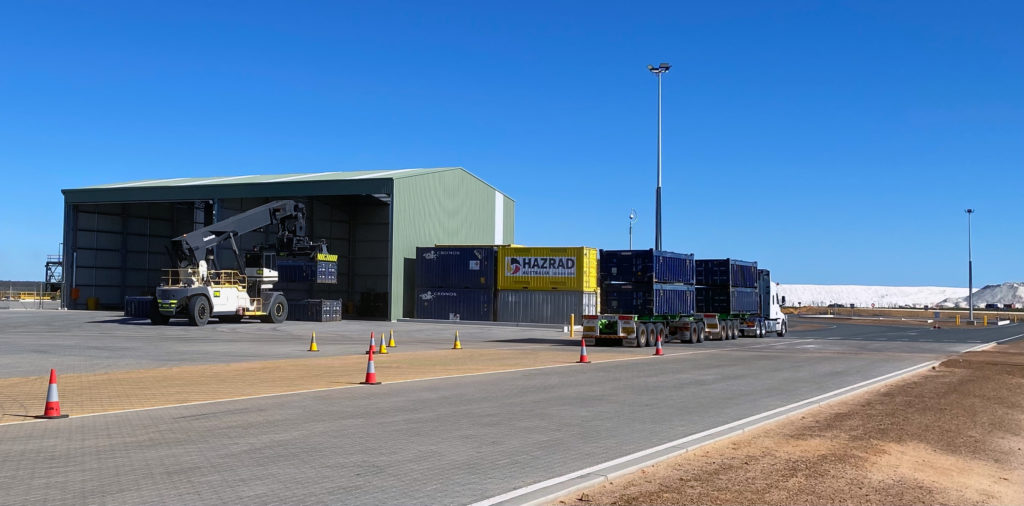
Project benefits and jobs
If approved, the revised Sandy Ridge Project could result in significant and long-term positive environmental, social and economic benefits to the Goldfields region, WA and Australia.
These benefits could include:
-
- The Facility is an example of a leading infrastructure development that meets and supports the WA Government’s waste legislation, regulations, policies, business plans and strategies with the objective of protecting the environment by managing waste responsibly. The Facility will contribute towards meeting the “recover” and “protect” targets within the Waste Avoidance and Resource Recovery Strategy 2030 and associated Action Plan 2020-21 (Waste Authority 2019). The operation of the Facility will help address the 2030 target which states, “all waste is managed and/or disposed to better practice facilities”.
- Providing opportunities for sustainable, long-term employment and training at a local and regional scale in WA.
- Provides safe management solutions for difficult to manage hazardous wastes.
- Critical piece of enabling infrastructure that provides a much-needed service that enables other infrastructure development and major projects.
- Provides significantly superior environmental outcomes to the current situation of legacy waste stockpiles being stored in temporary, unsuitable facilities in proximity to communities.
- Supports and enables the future potential recovery of valuable materials (that are currently deemed waste) by providing a safe and economic solution to the intractable components of waste. The project could attract and enable new waste recycling and recovery industries to WA.
- Additional direct operational jobs at the Facility and indirect jobs for contractors.
- Diversifying local and regional economies in the Goldfields region of WA.
- Additional operating expenditure is estimated to be tens of millions of dollars per annum over 25 years.
- Providing local business support.
- Fulfilling the Australian and WA government’s own environmental and waste policy obligations.
- Further, Sandy Ridge enables key infrastructure projects (and the jobs they drive) to proceed and gain approval by providing an economically viable and environmentally sustainable permanent solution for hazardous waste. In doing so, it not only helps to clean up the country and make it safer, but can provide direct and indirect job growth, predominantly in WA.
Container entering the covered waste testing bay for acceptance testing
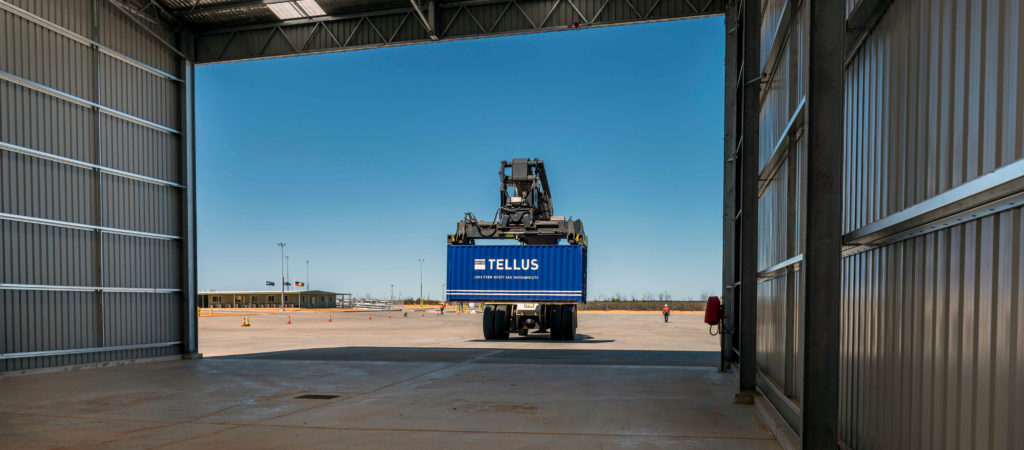
Site selection
The location of the Sandy Ridge development envelope has been specifically chosen for its natural characteristics which are aligned with international requirements (site selection criteria) and global best practice standards for a near surface geological repository.
Tellus completed comprehensive site investigations to support project approvals and technical studies. These included:
- Undertaking geological drilling programs (drilled 324 holes and 10,122 metres)
- Undertaking a water investigation drilling program and installing monitoring bores
- Installing an automatic weather station
- Undertaking kaolin immobilisation trials
- Undertaking multiple other field studies including biodiversity and heritage
- Comparing data with multiple international benchmark studies
- Building a 39-tonne(t) kaolin pilot plant that produced 9 t of processed kaolin
- Traffic studies and installation of engineering controls to improve road safety
Waste immobilisation plant and covered low level radioactive warehouse and secured area
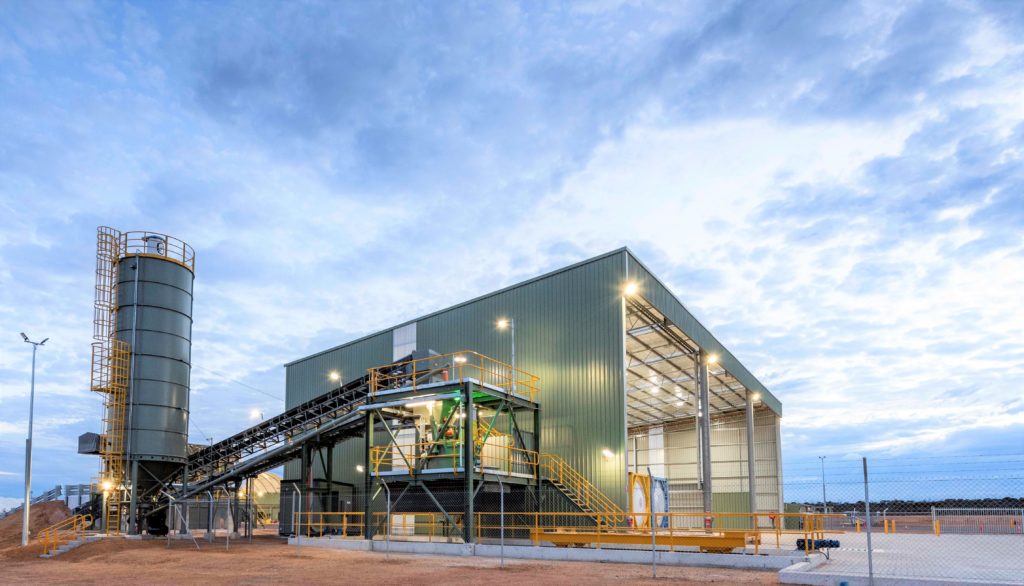
Sandy Ridge’s waste acceptance criteria
No major changes are proposed to the existing waste acceptance criteria for the Facility.
The majority is chemical waste from a broad spectrum of industrial sectors, including mining, oil and gas, contaminated site remediation, and utilities. Low level radioactive waste (LLW) including Naturally Occurring Radioactive Materials (NORM) and Disused Sealed Radioactive Sources (DSRS) is also received.
Tellus’ Sandy Ridge Facility will not accept any nuclear waste, or waste streams falling under intermediate (ILW) or high-level (HLW) radioactive waste designations, as detailed in our Waste Acceptance Criteria.
The Sandy Ridge Facility will be a State Emergency Services facility that can take diverse waste types from man-made and natural disasters.
What is hazardous waste and what type of chemical wastes will Tellus accept at the Sandy Ridge Facility?
What type of low-level radioactive waste will Tellus accept at the Sandy Ridge Facility?
Waste emplacement in the covered waste cell
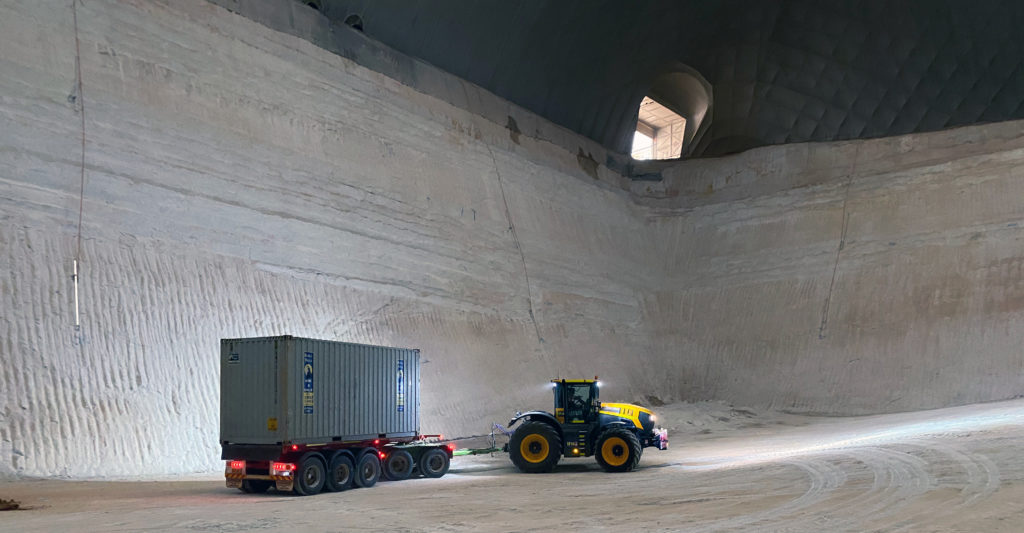
Waste acceptance jurisdiction
In line with MS1078, waste that will be accepted at the Facility will be sourced from states and territories within Australia and from Australia’s Exclusive Economic Zone.
Access
Access to and from the Facility is from the Great Eastern Highway via the existing 95 km Mt Walton Road. Tellus has completed upgrades to the existing intersection and the railway crossing on Mt Walton Road. Tellus has also completed construction of a new 9 km access road to the site gatehouse from Mt Walton Road.
Mining and waste emplacement methodology
- Conventional mining of open pits utilising drill and blast (if required), excavators and dump trucks
- Mining voids are re-purposed as waste cells for the disposal of hazardous wastes
- During waste operations the cell is protected from the ingress of rain water using a purpose built, mobile cell cover. This reduces the risk of leachate creation during waste operations and ensures year round operations.
- Wastes are emplaced ‘like-with-like’ in accordance with the Waste Zoning Guide.
- Once full, each cell is capped with compacted clay and rehabilitated.
- Long term monitoring of the closed cells includes a fully funded 100 year post closure institutional control period.
Assurance and insurance
Tellus has an approved, established and costed assurance framework and insurance policies following extensive government consultation and international peer review.
For further information:
Phone us at: +61 (0)8 6383 7868
E-mail us at: info@tellusholdings.com
